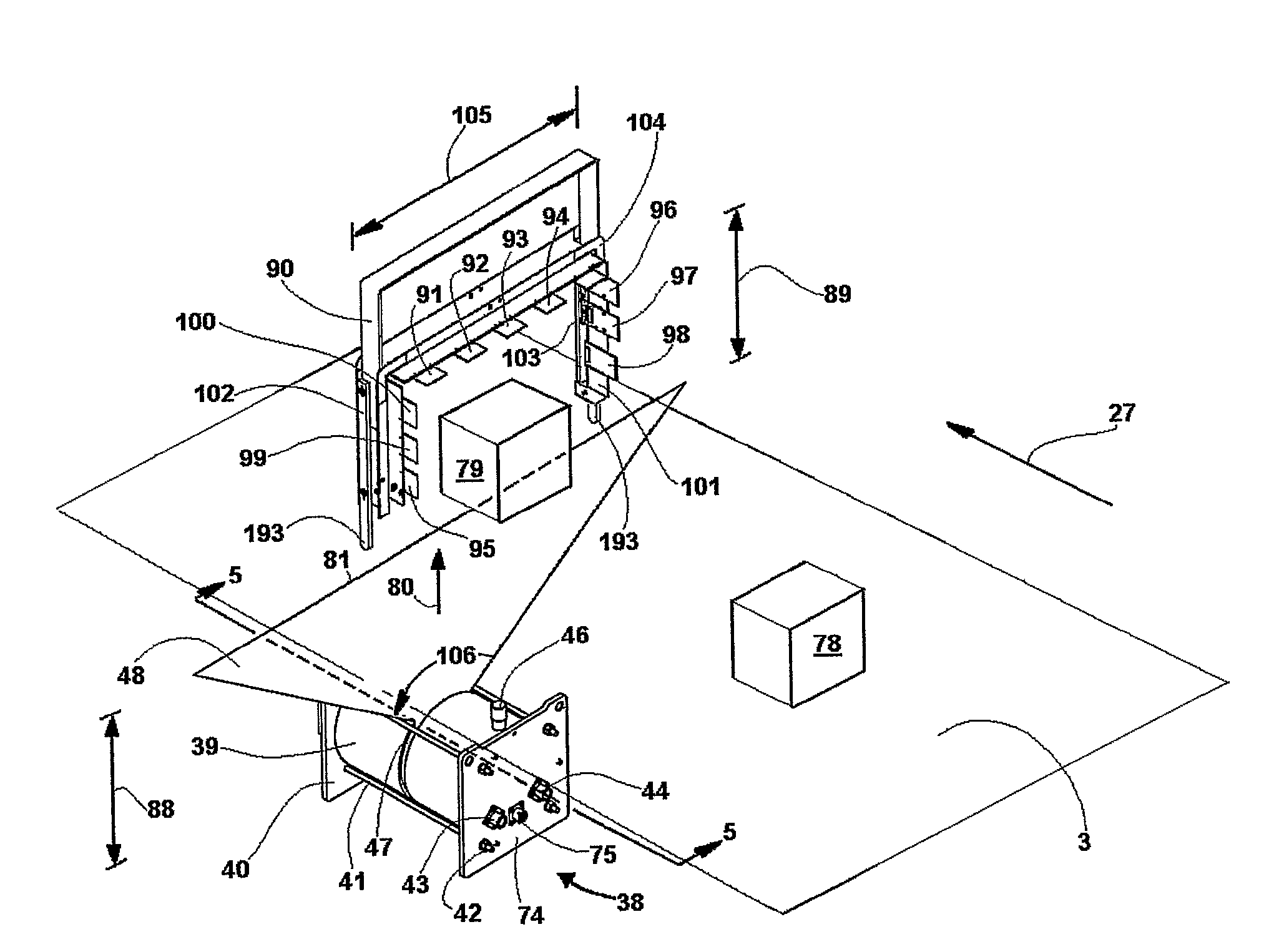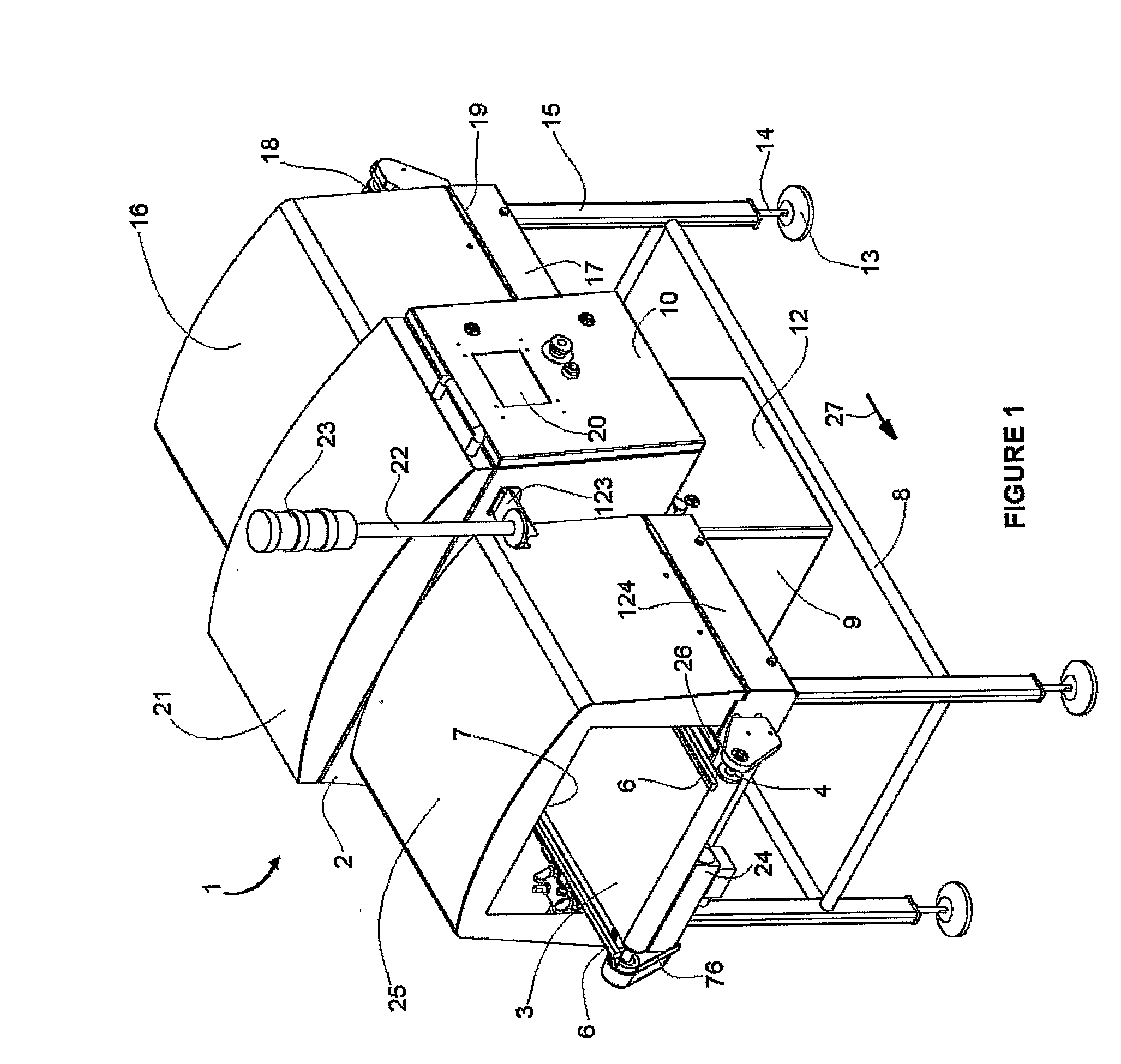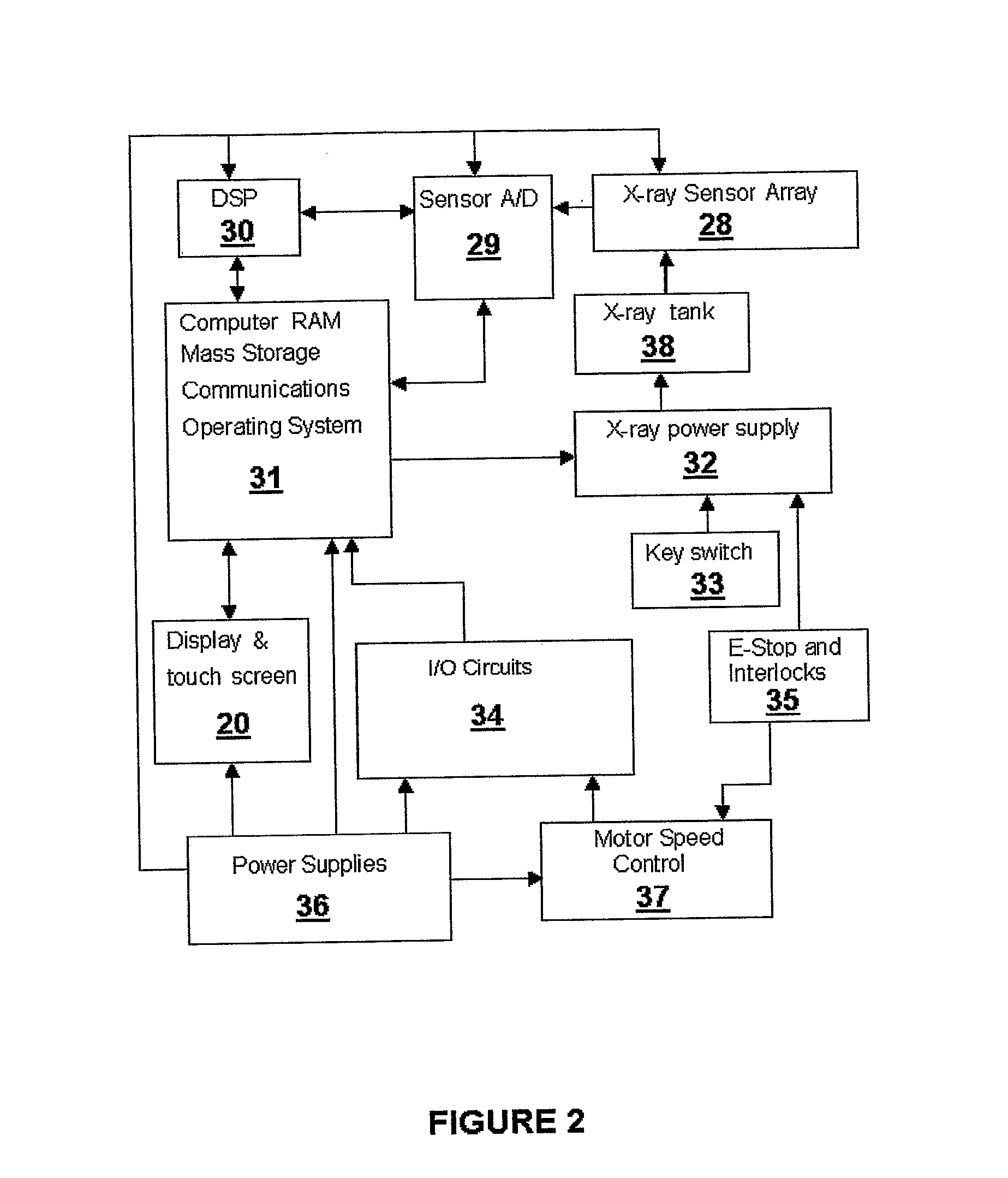Contaminant Detector For Food Inspection
- Summary
- Abstract
- Description
- Claims
- Application Information
AI Technical Summary
Benefits of technology
Problems solved by technology
Method used
Image
Examples
Embodiment Construction
[0055]As seen in FIGS. 1 and 18, the contaminant detector 1 is a conveyor line scan x-ray inspection system designed primarily for contaminant detection in packaged products. The contaminant detector 1 provides a functional quality control system in a factory or product processing facility. The contaminant detector 1 is intended for use where conventional metal detectors fail, typically when detecting dense contaminants such as glass, bone, stone, and plastic or metal in products that incorporate metallic materials as a part of the product packaging. Examples of such products include metal foil encased foods, foods in aluminum tins, cans or trays, foods with metal foil freshness seals, and selected foods with thin metal lids, or items, such as lettuce, for example, or other foods without metal packaging but having high product effect with respect to conventional metal detectors.
[0056]The contaminant detector 1 includes an x-ray generation unit housing 9 which contains various intern...
PUM
 Login to View More
Login to View More Abstract
Description
Claims
Application Information
 Login to View More
Login to View More - R&D
- Intellectual Property
- Life Sciences
- Materials
- Tech Scout
- Unparalleled Data Quality
- Higher Quality Content
- 60% Fewer Hallucinations
Browse by: Latest US Patents, China's latest patents, Technical Efficacy Thesaurus, Application Domain, Technology Topic, Popular Technical Reports.
© 2025 PatSnap. All rights reserved.Legal|Privacy policy|Modern Slavery Act Transparency Statement|Sitemap|About US| Contact US: help@patsnap.com



